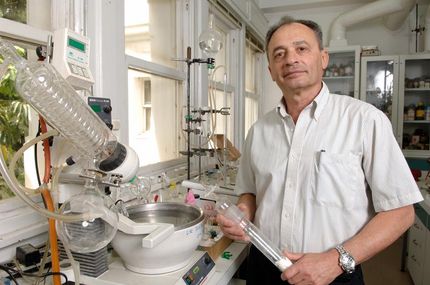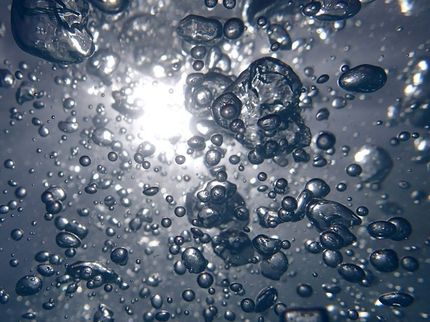Non-iron convenience - Cotton finishing keeps textiles in shape
Advertisement
Ironing? No thanks! This tedious task tops the list of unpopular household chores, right along with scrubbing floors and washing dishes. But people who like to wear cotton can hardly avoid the nuisance of having to iron their clothes. Even cotton goods labeled "easy-care" look better if the owner has taken the trouble of doing some touch-up ironing to smooth out any residual wrinkles in the shirt or trousers.
Now BASF has a new method (patent applied for) that makes ironing less important than ever before: The company's researchers have developed an especially gentle finishing process for textile manufacture. The BASF process makes cotton fabrics for shirts, dresses, bed linen or decorative fabrics significantly smoother than conventional methods can. And it does so anew with every laundering cycle. What's more, textile manufacturers find it easier to apply this process and to control the fabric's properties during manufacture.
Smooth to the eye and soft to the touch
Wrinkle-free skin, a creaseless shirt - the goal is a sleek, smooth appearance. An ever-increasing array of new and improved cosmetics is available for the skin. But the main weapon against wrinkles in your clothes has still been the tried and true iron - much as in great-grandmother's days. However, textile manufacturers have managed to get much closer to meeting the "non-iron" claim through improved finishing of fabrics. "Consumers insist on this property even after x wash cycles," says Hans-Günter Just, Manager of Textile Quality Control at German mail order giant Otto Versand.
A cotton shirt without durable press finishing is not a pleasant sight after washing and spin-drying. Crumpled and creased, it's fit only for the ironing board. But when a cross-linking agent like the Fixapret® brands from BASF is added during the cloth finishing process, the fabric acquires dramatically improved qualities including a creaseless look and an especially soft feel. The cross-linking agent reduces water absorption during the wash cycle. As a result, less water remains after spin-drying too. "That's how we combat the main cause of crease formation," explains Dr. Friedrich Reinert, textiles researcher at BASF. An additional benefit: Garments retain their shape better, shrink noticably less, are more colorfast and more durable, plus they dry faster.
A tip from the BASF experts: It is best to hang the durable press shirt dripping wet on the hanger to dry. Once you put it on to wear, it smoothes out a bit more. So you can leave your iron where you like it best: in the cupboard.
Cross-linking agents keep natural fibers from swelling
The reason for creasing of textiles is readily explained: During the washing process, cotton fibers swell, change their position and fail to return to their original state during drying. A shirt without durable press finishing is then actually hard to iron, and even calendered bed linen won't turn out entirely smooth. In the durable press finishing process, the textile web is passed through an immersion bath with at least two substances: a cross-linking agent and the catalyst. In the previously established process - wet cross-linking - the cross-linking agent condenses on the cotton fiber within 20 hours at 30 degrees Celsius. Since sulfuric acid is used as the catalyst, this process is tricky: "The acid destroys the cotton fiber unless optimal parameters are strictly maintained", explains BASF textile researcher Dr. Friedrich Reinert. The need for multiple drying cycles make














































